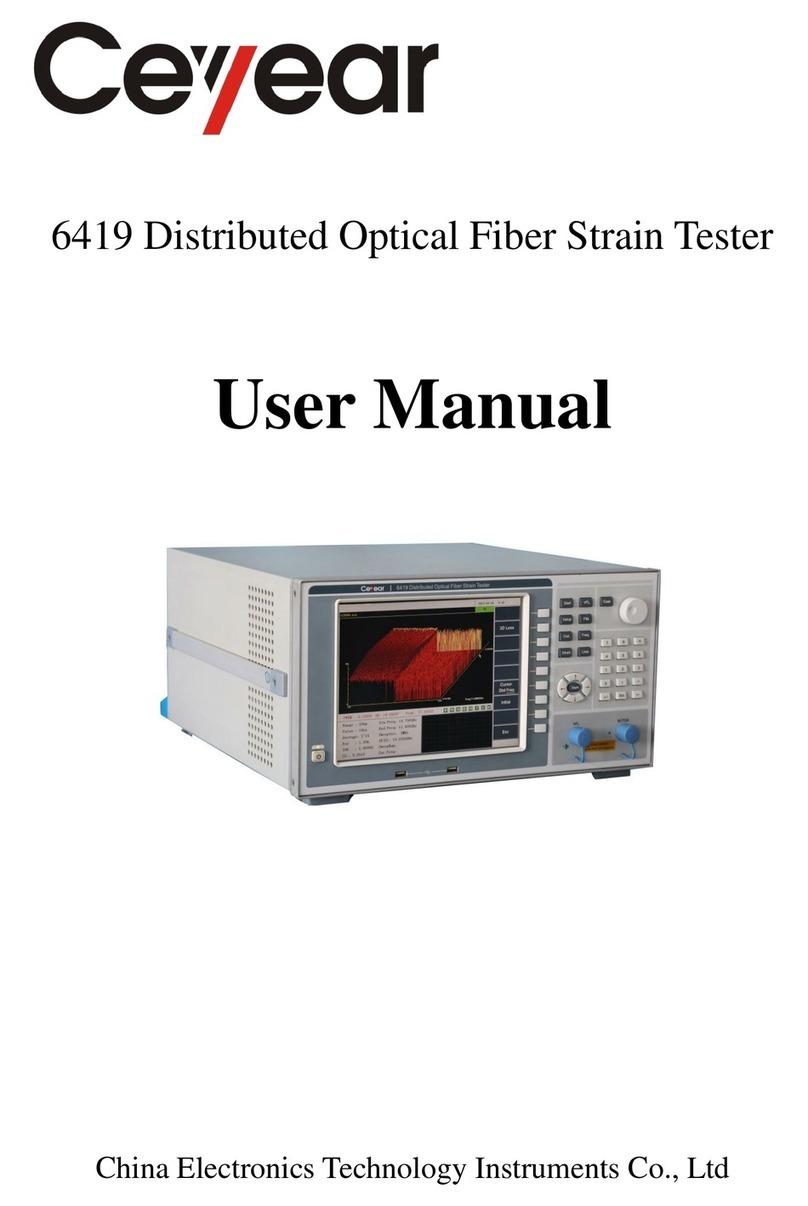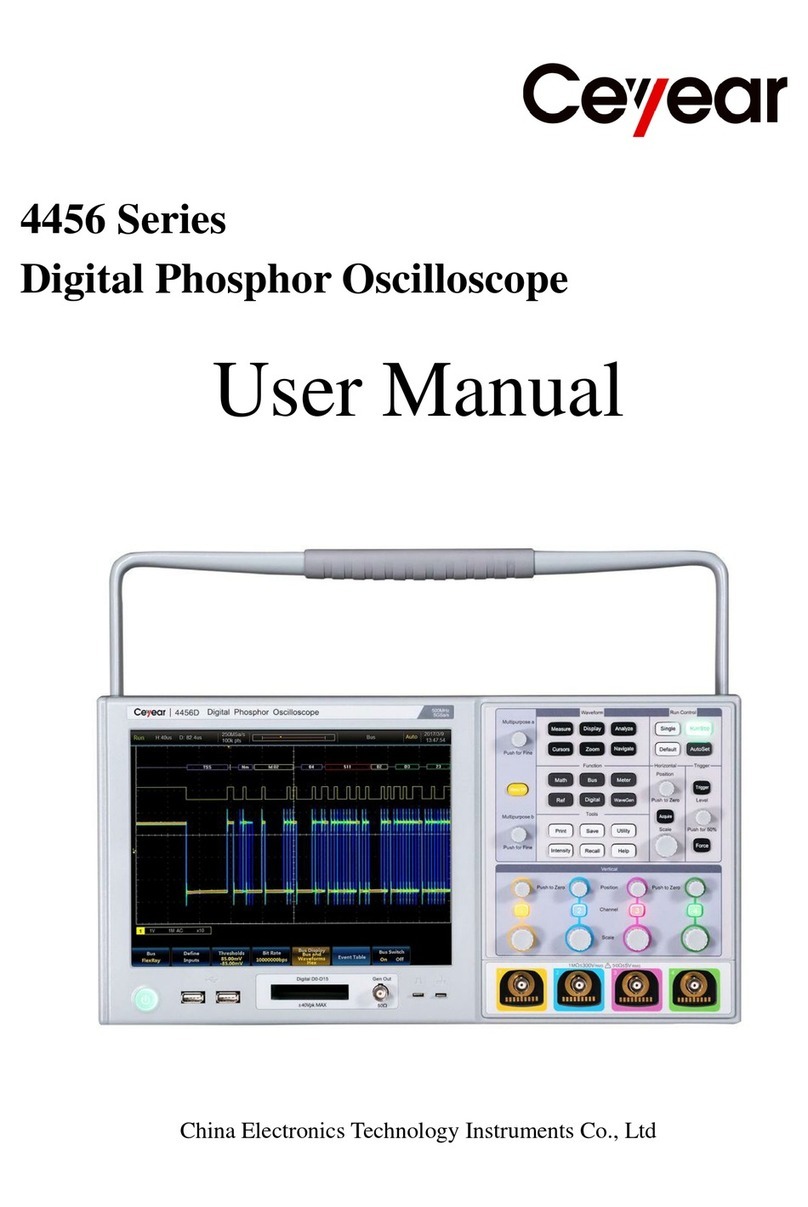
Preface
Thank you for purchasing and using 4992A Radio Test Set developed and produced by China
Electronics Technology Instruments Co., Ltd.
We take meeting your demands as our mission and while offering high quality instruments,
we also provide you with technical support and after-sales services. If you have any questions,
please don't hesitate to contact us:
NO. 98 Xiang Jiang Rd., Qingdao City, China
This manual describes the purpose, operation method, precautions, performance
characteristics, basic working principle, fault query, etc. of 4992A Radio Test Set developed and
produced by China Electronics Technology Instruments Co., Ltd, so as to help you rapidly
understand the methods and key points of operation of this instrument. For proper use, please read
this manual carefully and properly observe the guidance.
This user manual includes eight chapters in total.
Chapter I provide and overview of 4992A Radio Test Set, including main technical
characteristics, existing or available functions and technical indicators.
Chapter II to V mainly describe the operation. Chapter II describes how to handle a new
Radio Test Set as well as the precautions during operation. Chapter III mainly introduces the front
panel, external interfaces, etc. Chapter IV introduces the basic operations of 4992A. Chapter V
introduces the menus of 4992A, which are arranged according to the function categories to
facilitate access.
Chapter VI and VII introduce technical requirements, including a brief description of the
working principle of 4992A and an introduction to the performance test methods of main technical
indicators.
Chapter VIII introduces maintenance requirements, including fault query steps, error
information and repair methods.
This manual is the first version (No. AV2.766.1002SS/A.2) of User Manual
of 4992A Radio Test Set.
The information contained in this User Manual is subject to change
without notice.
The power to interpret the contents of and terms used in this Manual rests
with China Electronics Technology Instruments Co., Ltd.
China Electronics Technology Instruments Co., Ltd owns the copyright of
this User Manual which should not be modified or tampered by any
organization or individual, or reproduced or transmitted for the purpose of
making profit without its prior permission, otherwise China Electronics
Technology Instruments Co., Ltd will reserve the right to investigate and affix
legal liability of infringement.
























